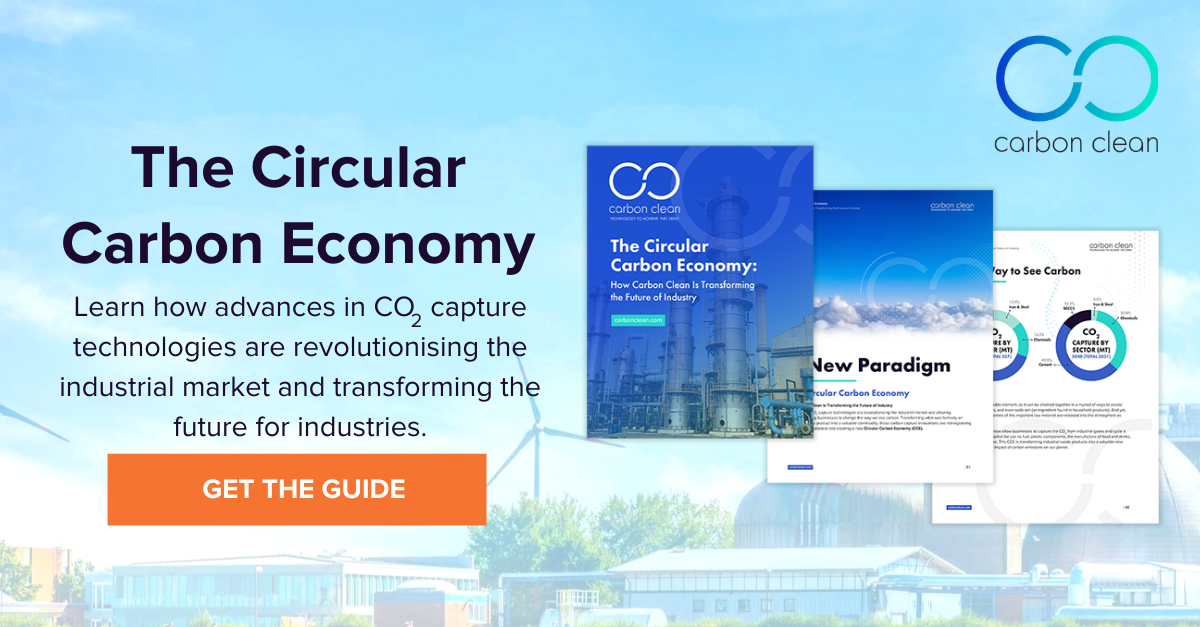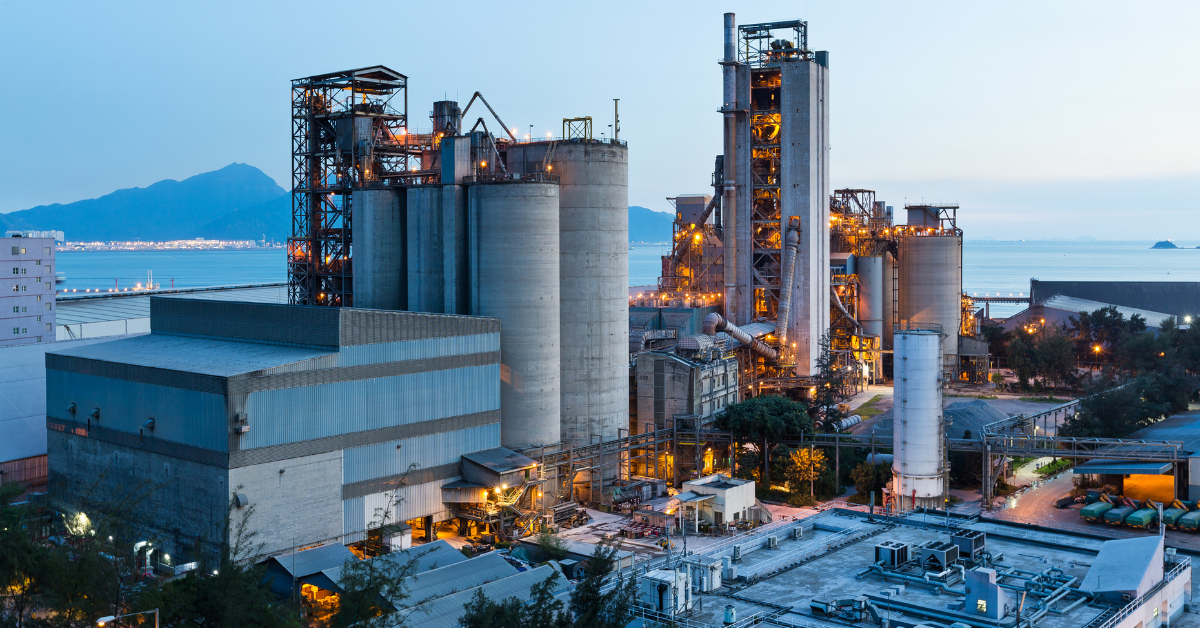Around the world, governments and businesses are recognising the immediate need to reduce and offset our carbon emissions. As part of the Paris Climate Agreement, countries around the world have committed to reaching net zero by 2050. So, how can we actually accomplish this?
Watch the video below to hear Laura Gillions, Director of Marketing at Carbon Clean, explain how industries can take advantage of the circular carbon economy (CCE) to capture and resell CO2, reducing their impact on climate change and supporting the global net zero initiatives.
What is the circular carbon economy and why is it important for climate change?
The circular carbon economy is transforming what was formerly an industrial waste product into a valuable new resource, reducing the impact of carbon emissions on our planet.
Carbon is a remarkably flexible element and CCUS technology is reinvigorating the green marketplace — as the captured carbon can be used to create fuels, plastics and even soda ash, an ingredient found in household products.
This new green economy is allowing forward-thinking businesses to change the way we see carbon, but each year over 40 billion tonnes of this important raw material are released into the atmosphere as carbon dioxide (CO2).
How does the circular carbon economy reduce greenhouse gas emissions for industry?
For the world to achieve net zero emissions by 2050 as per the 2016 Paris Agreement, industrial CO2 emissions will need to fall by around 45% by 2030 alone.
The circular carbon economy can eliminate almost half of those remaining greenhouse gas emissions by capturing and reusing a projected 9.3 billion metric tonnes of CO2 by 2050.
Industries need to begin implementing their roadmaps to develop viable, large-scale carbon capture solutions from today if they are to hit 2030 and 2050 targets.
What is net zero and how can heavy industry achieve it?
Net zero refers to the goal of minimising total carbon emissions from humans into the Earth’s atmosphere, with any emissions offset by carbon removal to reach a net output of zero. This is also referred to as carbon neutrality.
Reaching net zero targets requires more than reducing emissions. Businesses across industries need to embrace advances in green technology to reduce their reliance on fossil fuels and their impact on the environment.
Since heavy industry is already familiar with complex supply chain infrastructure, they are uniquely suited to harness the potential of the circular carbon economy to make an immediate impact on global climate targets.
What incentives and legislation are driving innovation in the circular carbon economy?
Governments around the world are lowering limits on the amount of carbon waste that can be produced. The European Union presented a new rule to reduce greenhouse gas emissions by 55% by 2030. These tightening regulations will continue to raise the cost of CO2 emissions.
At the same time, many jurisdictions are creating subsidies and tax credits for businesses that capture their carbon emissions. These net zero initiatives create an opportunity for early adopters to recoup much of the capital and operational costs involved in implementing carbon capture systems.
These incentives will further drive innovation in carbon capture, utilisation and storage (CCUS) technologies, while also decreasing the cost of implementation.
How can someone learn more about the circular carbon economy?
Download our eBook, The Circular Carbon Economy: How CCUS Is Transforming the Future of Industry, and talk to a Carbon Clean expert to learn more.
Looking to learn more about how your industry can use CCUS technologies to reach net zero? We want to speak to you about it! Click here to book an appointment with one of our specialists.



